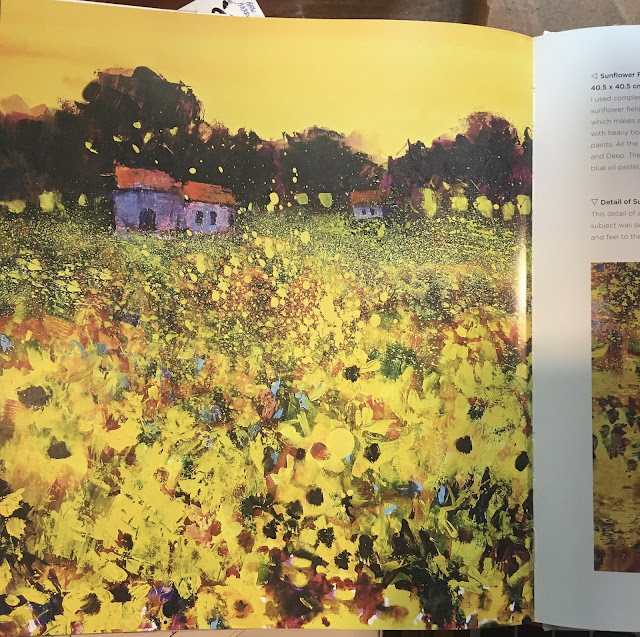I 'm continuing through the book "Contemporary Landscapes in Mixed Media", by Soraya French, and the chapter on color through the seasons. She says "Each season conjures up specific colors in our mind's eye."
This week I've been working with her summer palette, and wanted to share what I've learned. "With so many brilliant colors to choose from in the summer months it is important to harness your excitement in choosing your color scheme... Don't forget to include darks and neutrals to make the more brilliant colors shine"
The colors you see above are:
1 = Prussian blue (you can make this with cobalt + scarlet red), Prussian blue + Hansa yellow
2 = Ultramarine + Cadmium yellow medium, + white on the last 2
3 = Quinaccidone magenta, QM + ultramarine, Phthalo blue + white, QM + Phthalo green, + Phthalo blue
4 = Quinaccidone magenta + white, Cadmium red, + Cadmium yellow, Cadmium yellow, QM + Phthalo green
 |
| Sunflower Fields, Provence - by the author |
 |
| Summer Garden - first layer |

Comments
Post a Comment